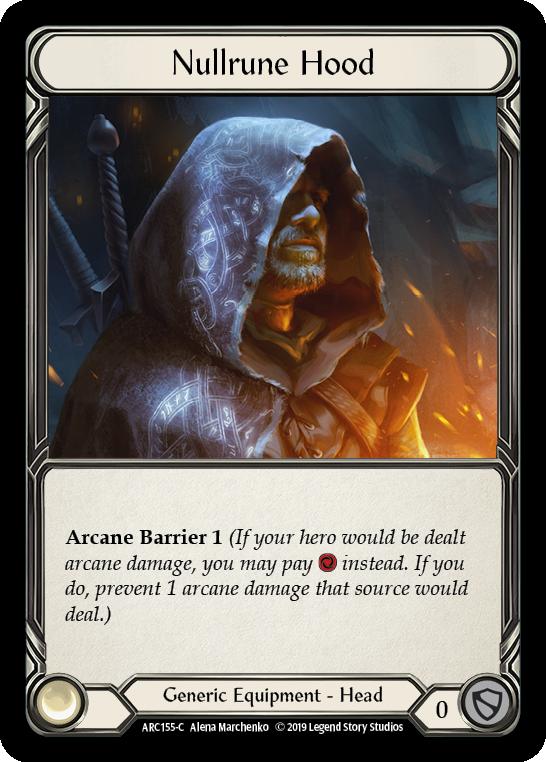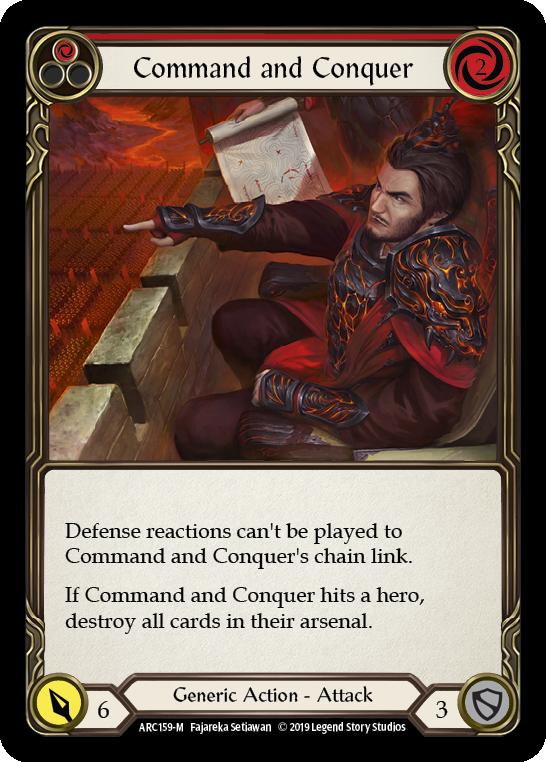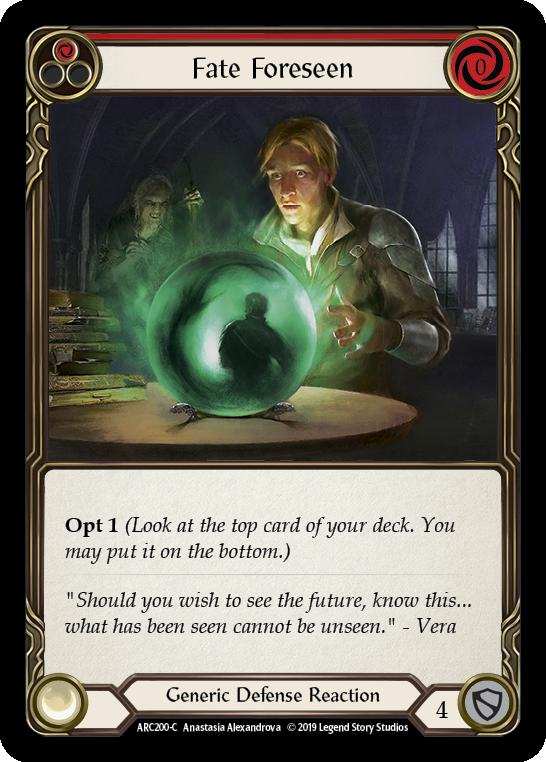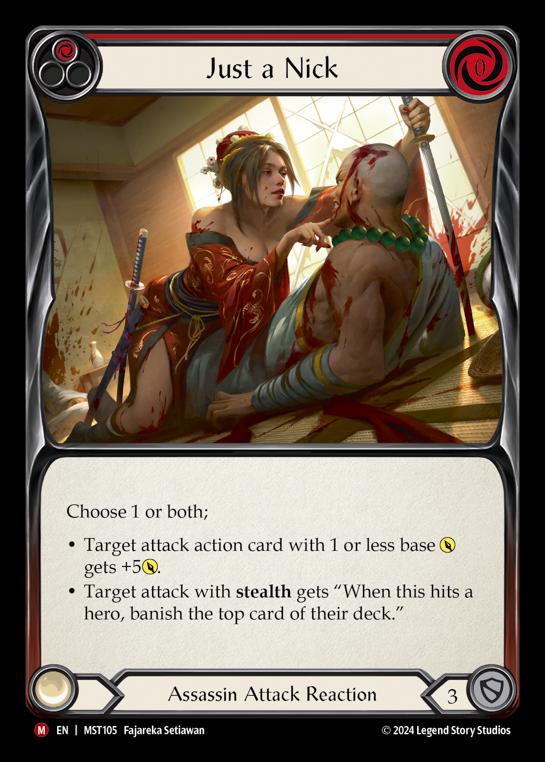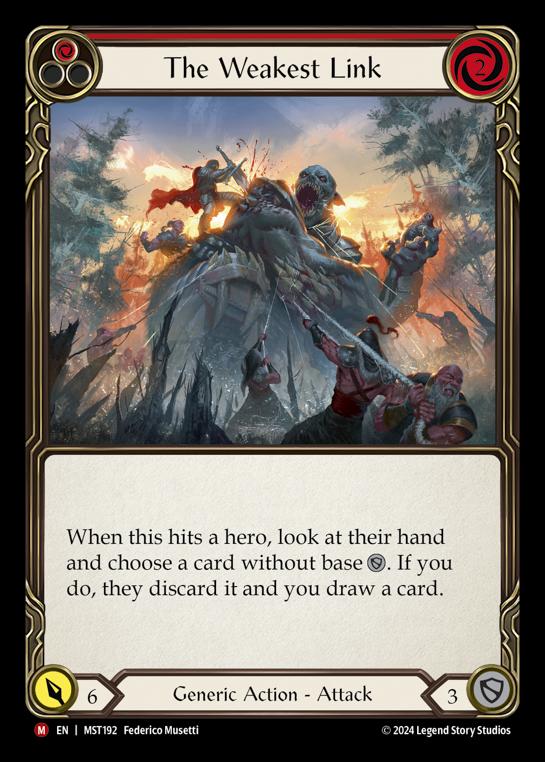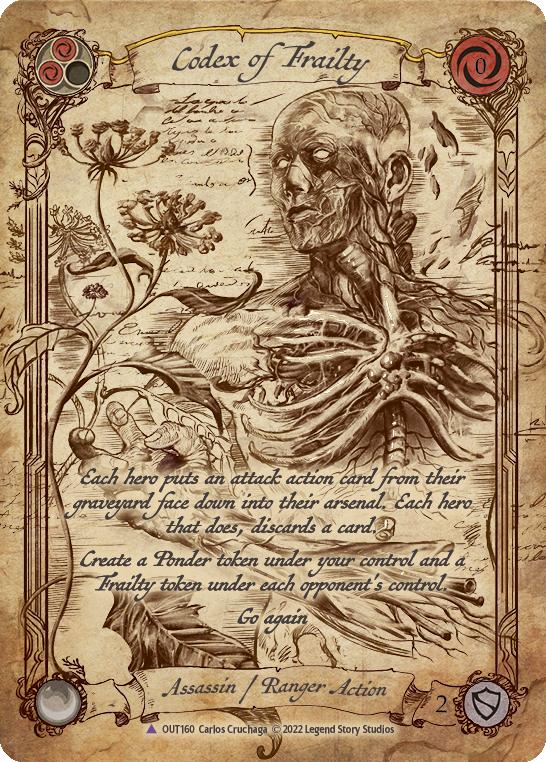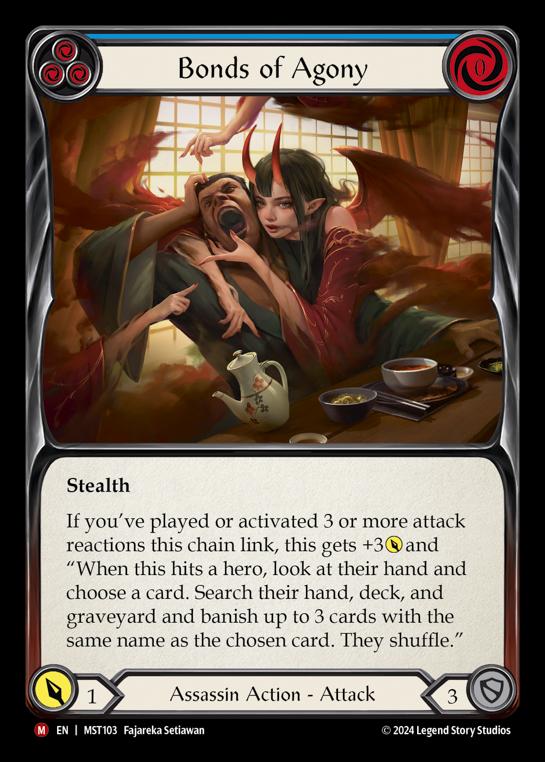Evergreen – Nuu, Alluring Desire

Have you ever thought to yourself “What would Freddy Krueger be like if he was isekai’d into a fantasy trading card game as a succubus?” If so, I have fantastic news: Flesh and Blood has the answer! This is Rhys, back with a new edition of Evergreen! This installment will focus on unlocking the potential of Part the Mistveil‘s Nuu, Alluring Desire.
Breathing aggressive life into the Assassin class, she adds new levels of depth to Flesh and Blood gameplay. To address an early elephant in the room, most heroes within the Classic Constructed format have universally agreed upon approaches to deckbuilding and gameplay; Nuu is not one of those heroes. She can be built to play with a lean on aggressive attacks, or a slower, more traditional defensive style that many Assassin players have come to enjoy from the class. To start, you’ll learn about the aggressive game plans, and will learn about the defensive angles as you read.
Dagger, Dagger, Dagger
The key to all styles of play is to pursue unpredictability, making your attacks feel impossible to properly defend. You will always be using hidden information to your advantage, and your weapons help conceal that information. Consider which dagger you want to connect with more if you’re swinging both, as the second dagger is more likely to connect. If the first dagger was defended, taking an entire second card or equipment from the opponent is something they’re generally less inclined to give you, since the likelihood of you simply ending your turn after the second dagger is high. This will be a universal tool for any style of Nuu that you play.
Before going too in-depth, let’s take a look at what a Nuu deck will look like that operates toward the center of these two ends of the spectrum to gameplay, that way you can look at what appeals to you, and build in the direction that best suits you. This list was put together by none other than World Championships 2023 runner-up Shing Tsang, and what a masterpiece it is.
" Shing Tsang's Nuu, Alluring Desire"
Immediate observations will include how many one- and two-ofs are in this deck. This is something you’ll see more frequently at the top and bottom levels of competitive play, where players are incentivized to either try things out that will take an opponent off their footing, or prepare for niches of an extremely wide open format. These are the kinds of cards that can surprise an opponent at the end of a lengthy combat chain. Looking for a Scrap, Levels of Enlightenment, Enlightened Strike, and in some cases Hurl can generate especially high pressure in this deck because of how difficult it is to decide between present damage and potential future on hits. If they opt out of blocking and you don’t have a follow up, they lose potential value in their cards. But if you follow up with a devastating on hit like Bonds of Agony or Command and Conquer, the opponent is suddenly much further behind than anticipated.
Where decks begin to diverge is how whether or not they opt for a deeper well of defense reactions like Fate Foreseen or Oasis Respite, if Sink Below is considered universal. More aggressive leaning lists will play greater quantities of attack reactions or attacks with go again, looking to create opportunities for all of Assassin’s disruptive hit effects. Venomous Bite and Hiss are the most common for this, but you can cook with Razor Reflex as a source of both attack reactions and go again both!
I’ma Let You Finish, But
There is a huge variety of cards that disrupt opposing game plans, but they largely revolve around two things: disrupting the opposing arsenal or the opposing hand.
Sequencing your disruption is where you’re going to grow the most when starting out with this deck. This comes most often in things like finding ways to not send too much of one type of effect in a turn. If you have a Slither token and connect with a Leave No Witnesses, stripping their arsenal, you don’t want to then play a Command and Conquer on the same turn unless they’re at a low enough life that they have to block it anyway. Evaluate a turn sequence that can take a card from hand with a dagger first before that disruption, but keep a close eye on your life total. It’s tempting to use your life total as a resource a bit too much in the early game and lose key opportunities to disrupt in later turns because of it.
There are multiple cards with situational discard effects you can bring in against decks that will try and ignore you to race you down. These matchups currently include Guardian, Brute, and Ninja decks. These matchups are where it’s key to have these effects to force them to interact with your smaller attacks, making your own opportunity to punish them later. Codex of Frailty can be used to “turn on” arsenal hate cards in your hand, and Siren's Call can take critical blue pitch cards from opposing hands to reduce their return attack to almost, if not completely, zero. Assess your cards in tandem with each other to extract greater value from them. The Weakest Link may seem unintuitive in some matchups, but Kayo, Armed and Dangerous plays as many as twelve cards that have no defense value in their deck, each of which attack for six or eight. This will be a card that rewards and punishes you based on your level of familiarity with opposing decks. Feel free to replace it with something like Amnesia if you’re not confident in remembering where to bring it in, or keep a sideboard guide with you!
The Big Chis
Different styles of play use a differing amount of chi cards with different intentions. Some decks will play as few as four chi cards and will equip Traverse the Universe, waiting for only that perfect moment where Nuu, Alluring Desire‘s hero ability can do the most damage. Others will play as much as all nine chi cards available to them in order to utilize Mask of Recurring Nightmares as much as possible, while also threatening the presence of Nuu’s ability, whether or not it’s ever used. Neither approach is more correct than the other – we even saw both styles of deckbuilding featured in the top eight of Pro Tour: Amsterdam! Find the style that suits you best, and build from there. And, as always, don’t forget to de-chi every round!
Be an Assassin That Retires
On top of keeping track of your life total, be careful to not overcommit to the potential of your hand. This means if you have a Bonds of Agony, consider carefully if it’s something you should automatically tank a bunch of damage to set up, especially by considering the likelihood of what payoff you can expect. Players will often overcommit to threatening Bonds of Agony; don’t be afraid to pitch it to use later, especially if there’s still blocking value you can extract from any equipment you’d need to use to fulfill it. Also consider carefully if it’s the best thing to do if you’re using a Mask of Recurring Nightmares reaction, since that allows the opponent another opportunity to protect their most important cards.
As with all Assassins, putting an attack reaction in your arsenal can punish you badly, so only do so with the appropriate care. Just a Nick is so powerful that it can occasionally be justified, since you’ll want to get the value out of it quickly. If you’ve played another Assassin before, you’ll either have heard a horror story about Shred in a player’s arsenal, or you have one yourself.
Contentious Topics
There are some cards in this deck that folks will have strong opinions about. Some will tell you Vambrace is absolutely required to beat Enigma, Ledger of Ancestry, others will say Pick to Pieces is enough, others will say that both are not needed for a matchup they personally consider to be too poor to prepare for in deckbuilding. Players who value Bloodrot Pox tokens highly will recommend Codex of Bloodrot, as it can also set up arsenal disruption cards. You can even see discussion about Pursuit of Knowledge, as it’s a threatening blue attack action, even if it doesn’t synergize with other parts of the deck. What’s important is finding cards that best flow with your playstyle, local opponents, and goals for what you think a winning board state is.
Part the Mistveil released heroes with dramatic abilities to the game, to overall positive but still mixed reviews. Don’t get too caught up in cyclical arguments about card choices if doing so stresses you out. We’re all here to play a game we love, and have as much fun as we can doing it. Ensure you’re prioritizing your own happiness when considering others.
That’s it for this edition of Evergreen! Thank you so much for tuning in, and I’ll see you in the next one!








